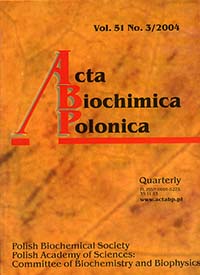Bidirectional regulation of renal cortical Na+,K+-ATPase by protein kinase C.
Abstract
We examined the role of protein kinase C (PKC) in the regulation of Na+,K+- ATPase activity in the renal cortex. Male Wistar rats were anaesthetized and the investigated reagents were infused into the abdominal aorta proximally to the renal arteries. A PKC-activating phorbol ester, phorbol 12,13-dibutyrate (PDBu), had a dose-dependent effect on cortical Na+,K+-ATPase activity. Low dose of PDBu (10(-11) mol/kg per min) increased cortical Na+,K+-ATPase activity by 34.2%, whereas high doses (10(-9) and 10(-8) mol/kg per min) reduced this activity by 22.7% and 35.0%, respectively. PDBu administration caused changes in Na+,K+-ATPase Vmax without affecting K(0.5) for Na+, K+ and ATP as well as Ki for ouabain. The effects of PDBu were abolished by PKC inhibitors, staurosporine, GF109203X, and Gö 6976. The inhibitory effect of PDBu was reversed by pretreatment with inhibitors of cytochrome P450-dependent arachidonate metabolism, ethoxyresorufin and 17-octadecynoic acid, inhibitors of phosphatidylinositol 3-kinase (PI3K), wortmannin and LY294002, and by actin depolymerizing agents, cytochalasin D and latrunculin B. These results suggest that PKC may either stimulate or inhibit renal cortical Na+,K+-ATPase. The inhibitory effect is mediated by cytochrome P450-dependent arachidonate metabolites and PI3K, and is caused by redistribution of the sodium pump from the plasma membrane to the inactive intracellular pool.Acta Biochimica Polonica is an OpenAccess quarterly and publishes four issues a year. All contents are distributed under the Creative Commons Attribution-ShareAlike 4.0 International (CC BY 4.0) license. Everybody may use the content following terms: Attribution — You must give appropriate credit, provide a link to the license, and indicate if changes were made. You may do so in any reasonable manner, but not in any way that suggests the licensor endorses you or your use.
Copyright for all published papers © stays with the authors.
Copyright for the journal: © Polish Biochemical Society.


